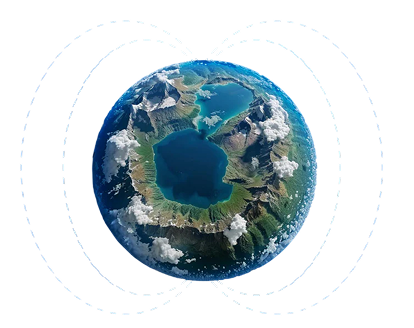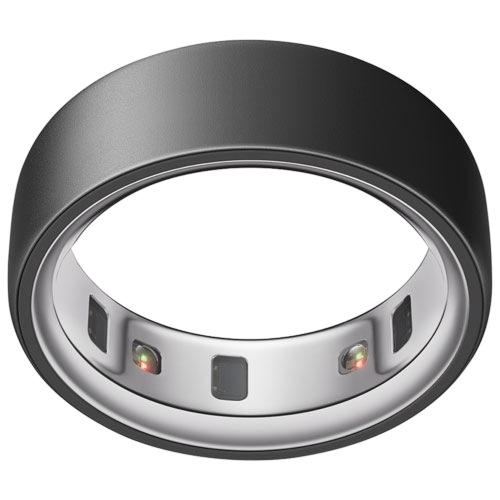Veteran Wellness with Grey Team
In a structured program with Grey Team (a U.S. veterans' nonprofit), participants showed:
- Over 50% reduction in stress index
- Measurable improvements in HRV and EEG readings
Magnetism is an important part of our world - in big and small ways. Magnetic fields protect our planet from solar radiation, help animals like turtles, birds, and bees migrate, and even power the cell phone or computer you are using to read this.


The signals digitally mimic the natural effects of compounds like caffeine or melatonin — without anything entering your body.
Emerging research continues to show that the body responds to sound and frequency at a biological level, even down to individual cells.
Hapbee delivers signals your body already knows how to respond to, using safe, non-ingestible tech.
Every molecule gives off a unique electromagnetic "signature". Hapbee captures these using advanced sensors and turns them into digital files.
Signal Playback: The device plays these signals back as ultra-low-frequency magnetic fields that interact with your cells, creating effects similar to the original molecule.
No Substances Needed: Nothing enters your body. Hapbee delivers these effects through its devices.
These signals are ultra-low frequency magnetic fields. They interact with the body without going into it. No stimulation, no pulses, no electrical currents. Just safe, passive signal delivery.
Users wearing the Hapbee Sleep Pad with the Deep Sleep signal saw:

In a structured program with Grey Team (a U.S. veterans' nonprofit), participants showed:
Hapbee uses ultra-low frequencies (0–50kHz) that stay well within safety limits—less than 10% of the maximum allowed. Its signal is much gentler than common tech, emitting just 0.2% of the magnetic strength of the iPhone 12’s wireless charger, while delivering far more benefit.
Thousands of people have used Hapbee in studies and real life, with no significant negative effects reported.
"Hapbee's technology is unlike anything I've seen. It's a game-changer for non-chemical wellness."
"This helps break the prescription cycle. It gives vets an empowering, drug-free way to manage pain and stress."
"We use Hapbee after games to wind down and sleep better. Huge difference in how quickly I fall asleep and how rested I feel."
"This lets you 'beam' melatonin effects without swallowing anything. A practical tool for sleep, addiction, and mental health."
"There are a lot of great products out there, but nothing beats Hapbee."
A growing body of scientific research is showing that sound and electromagnetic frequencies can directly influence cellular behaviour - impacting gene expression, fat cell development, inflammation, and more. This science forms the backbone of what Hapbee does: we use safe, non-chemical signals to influence how you feel without substances and most importantly without side effects.
ulRFE signals mimicking compounds like fentanyl, CBD, and naproxen produced statistically significant pain reduction in validated neuropathic, inflammatory, and visceral pain models.
Results showed enhanced effects when high-frequency components (>6kHz) were removed.
In EMulate's trials, ulRFE used alone or with chemo improved median overall survival by up to 40% in patients with recurrent glioblastoma. In pediatric brain cancer (DMG), 12 out of 14 patients survived past 12 months (vs. typical 6–9 months).
ulRFE signals can down-regulate genes like EGFR in glioblastoma cells—matching the effects of siRNA therapy at both mRNA and protein levels.
uLFRE signals based on known compounds produced pain relief equal to or greater than physical administration of fentanyl, naproxen, and CBD.
uLFRE signals based on known compounds produced pain relief equal to or greater than physical administration of fentanyl, naproxen, and CBD.
Whether you're on the go or at home, find the Hapbee that feels right for your lifestyle.

Your nighttime companion for peaceful rest. Simply place it under your pillow and let it help you unwind.

Perfect for busy days when you need gentle support. Wear it comfortably wherever life takes you.
Your cart may be empty now, but let us help you fill it up with amazing products.